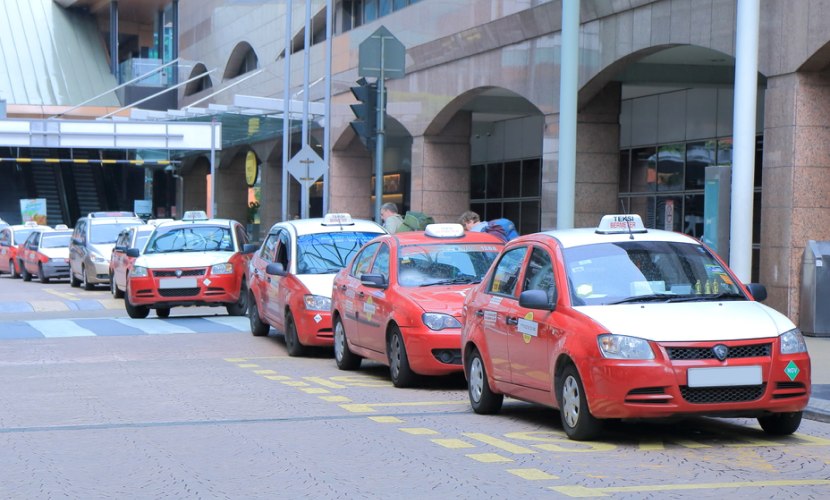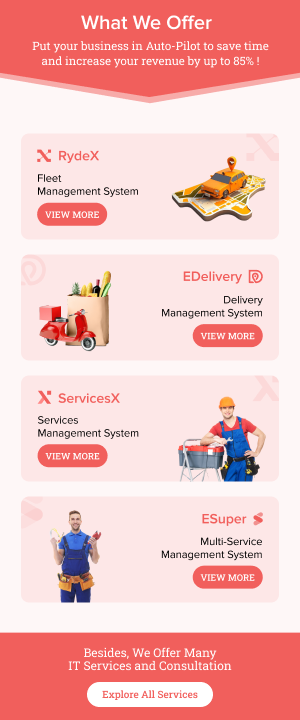
Malaysia’s rapidly growing urban landscape has increased the demand for reliable and efficient transportation, inspiring entrepreneurs to capitalize on this expanding economy. If you aspire to launch your own venture but are struggling with how to start a taxi business in Malaysia, we are here to help.
This guide will take you through all the basics of starting a taxi business in Malaysia. It will also provide insights into the country’s burgeoning taxi market and the factors driving its growth. So, let’s delve into the details.
Learn How to Start a Taxi Business in Malaysia
As a thriving market, Malaysia offers extensive opportunities for starting a taxi company. However, navigating the entire process can be daunting, especially for individuals who have never run a business before. To ease your job, we’ve outlined a complete guide on how to start a taxi business in Malaysia. Explore the guide below.
Conduct Market Research
The success of any taxi business depends on how well it aligns with the needs of its target audience. So, start off by researching your ideal customers. Take a close look at their demographics and psychographics to gain a deeper understanding of their behaviors and pain points.
Along with this, it’s essential to assess the competitive landscape of your target market. Analyze your competitors and understand their strengths and weaknesses. This will help you create a taxi service that effectively stands against your competitors and gains an edge in the industry.
Decide the Company Structure
Next, you have to register your business entity at SSM - Suruhanjaya Syarikat Malaysia.
When selecting the right company structure, consider your business goals, risk tolerance, and long-term vision. Here are some common structures you would need to select from:
- Sole Proprietorship
- Partnership
- Limited Liability Company (LLC)
- Corporation
This business is owned and run by a single person. It’s easier to set up, but you will be personally liable for business debts.
Partnership businesses, as the name suggests, involve more than one owner. They generally pose less risk than a sole proprietorship, as partners share the profits, losses, and liabilities.
LLCs act as separate legal entities, meaning their owners are not held liable for the company’s debts and legal obligations.
Like LLCs, a corporation is also a separate legal entity. It offers the strongest protection to its owners from personal liability. However, forming a corporation may be more expensive than other business structures.
Build a Business Plan
After thorough market research, your next step is to build a business plan for your taxi company. When selecting the operational model, you usually have three options: traditional taxi business, ride-hailing platform, and hybrid model.
Traditional taxi services offer complete control of your business revenue, but they come with hefty costs as well. Ride-hailing platforms offer better exposure and relieve you from operational costs such as drivers’ salaries and fleet maintenance.
You can also opt for a hybrid model where you act as a traditional taxi operator that offers online booking services and also allows independent drivers to provide ride-hailing services on your app. However, this model has its own merits and demerits, so it is essential to evaluate it thoroughly before making a selection.
Secure Funding
Once your business is registered, your next step is to acquire funds to support your business operations. While you may have saved enough to get your taxi company started by bootstrapping, you will need money to scale and sustain it in the future.
Before you proceed with funding, make sure you have an accurate estimation of your business expenses. Research and understand the cost of developing an app, getting licenses, acquiring insurance, and other operational expenses.
Once it’s defined, select how you want to get funded. There are several options ranging from bank loans, angel investors, venture capital, crowdfunding, and IPO.
Purchase or Lease Vehicles
If you’re starting a taxi company that owns its fleet, you may have to purchase vehicles to build your fleet. You can either opt for a commercial vehicle loan or a Hire Purchase agreement (a popular financial option in Malaysia) to fund your purchasing operations.
However, if you can’t make hefty upfront investments, leasing vehicles could be a viable option for you. It helps you kickstart your business with lower investment and offers flexibility in changing vehicles.
Hire and Train Drivers
Hiring and training drivers is the most critical aspect of running a successful taxi business. Drivers don’t just facilitate transportation services; they build a foundation for your company’s reputation, safety, and profitability.
Therefore, make sure you thoroughly evaluate drivers’ background, check whether they meet regulatory standards, and assess their skills before hiring. You may also need to train your drivers for cultivating professionalism, handling emergencies, and delivering excellent customer service.
Developing a Robust Taxi App
Now that your firm is well-funded, it’s time to take the most crucial step—building an app. Find the right taxi app developers who have years of experience and a proven track record of delivering successful projects. Evaluate their past projects to gauge the work quality.
Once you decide on your tech partner, create a detailed project timeline with all the key milestones. Define how often you’ll need reports and when the entire project should be finished. You may need to provide your suggestions in between the developments to ensure your platform is coming out as you expect.
Launch & Market Your Business
Once your app is developed, create a robust launch strategy for your taxi business. Get your app published and your business website live on the internet. Having a landing page is crucial. It will help you gain customers online and enhance the credibility of your taxi company.
However, apps and websites won’t drive traffic on their own. You’ll have to promote them to raise brand awareness and attract new customers. Study your competitors’ promotional approaches, like Uber’s marketing strategies, to understand how they market their business.
Take inspiration and form a strong strategy that includes both digital and out-of-home (OOH) marketing channels for maximum exposure.
Besides this, you may also want to join local taxi unions for exposure and support. Perjiwa (Association of Malaysia Taxi Drivers, Rental Cars, Premium Executive Limo) is a notable organization in Malaysia, representing taxi drivers and related transport sectors.
Enter the Malaysian Ride-Hailing Market With Our White-Label Taxi App. Establish a Thriving Business Backed by a Powerful Solution.
Comprehend Legal Requirements Before Starting a Taxi Business in Malaysia
Before you start your taxi business in Malaysia, make sure you tick off all these legal requirements:
Vehicle Standards
The Malaysian government has set standards that every vehicle must follow in order to run as a commercial transportation option in the country.
- Only vehicle models with at least a 3-star ASEAN NCAP safety rating (or equivalent) are allowed for taxi/e-hailing registration.
- Vehicle’s age must not be more than 15 years (10 years if you’re in Sabah)
- All commercial vehicles must pass the initial safety and emissions inspection at PUSPAKOM before being permitted for service.
- Vehicles must pass all other APAD‑imposed operating standards, including safety, cleanliness, and passenger comfort requirements.
- Moreover, each vehicle must be licensed under a Commercial Vehicle Licensing Board (CVLB) Permit. This license defines the vehicle’s operational area, for example, KL city, Selangor, airport, intercity, etc.
Driver’s Criteria
Your drivers must adhere to certain rules before you hire them or they apply at your firm.
- The driver must hold Malaysian citizenship.
- They must be at least 21 years of age.
- They must have a Competent Driving License (CDL) for the vehicle they intend to drive.
- They must have clean criminal and traffic violation records.
- They must obtain a Public Service Vehicle (PSV) License:
- PSV Taxi for traditional taxi services
- PSV E-Hailing for e-hailing taxi services
Insurance Coverages
Insurance protects your business against any unforeseen circumstances. Here are several key insurance coverages you must purchase before launching your taxi service in Malaysia.
- Public Service Vehicle (PSV) Insurance: This is the core insurance requirement of commercial vehicles, including traditional taxis and ride-hailing services.
- E-Hailing Add-On Insurance (for ride-hailing services): This is a comprehensive insurance policy for all e-hailing service providers.
- Employer-Employee Social Security (SOCSO): Drivers, whether employees or self-employed, must be covered by the social security scheme.
- For Employees: The Employer and Employees contribute to the SOCSO scheme.
- For Self-Employed Drivers: They are required to contribute to the Self-Employment Social Security Scheme (SESS).
Permits & Licensing
Permits and Licensing requirements for taxi businesses in Malaysia vary by the type of taxi business: traditional taxi or ride-hailing service. Here’s a detailed breakdown of all the essential permits for each type.
Traditional Taxi Service:
To start a traditional taxi business, obtaining a Taxi Operator License (Lesen Pengendali Teksi) is required. It allows owning and operating multiple vehicles under a single business entity and grants permission to run a commercial public transport service.
Ride-Hailing Service:
If you want to start an online taxi business in Malaysia, you will need an e-Hailing Operator License (eHOL) from APAD.
Ride-hailing companies also require an additional license called the Intermediation Business Licence (IBL).
Exploring Taxi Industry Classification in Malaysia: Key Information for Entrepreneurs
Malaysia’s taxi industry is governed by Agensi Pengangkutan Awam Darat (APAD). It is a government agency under the Ministry of Transport, responsible for planning, developing, and regulating land-based public transportation.
This agency divides the industry into seven main license classes, namely,
Taxi
A motor vehicle is classified as a Taxi if,
Seating Capacity: Upto 6 people, including driver
Operating Model: Picks up and drops off passengers in return for a single fare
Operational Areas:
- Klang Valley
- Johor Bahru (limited to Johor Bahru City only)
- Penang (Limited to the Island area only)
Car Rental
A motor vehicle is classified as a Car Rental if,
Seating Capacity: Upto 6 people (or 12 in areas permitted by APAD), including driver
Operating Model: Picks up and drops off passengers in return for separate payments made by them.
Operational Areas:
Areas other than
- Klang Valley
- Johor Bahru (limited to Johor Bahru City only)
- Penang (Island area only)
Luxury Taxi
A motor vehicle is classified as a Luxury Taxi if,
Seating Capacity: Upto 7 people, including driver
Operating Model: Offers special rental services, appointment contracts, and bookings (e-hailing) for a fee.
Operational Areas:
- APAD-approved operational areas based on Service Permits
Airport Taxi
A motor vehicle is classified as an Airport Taxi if,
Seating Capacity: Upto 7 people, including driver
Operating Model: Used only to carry passengers to and from airports in return for a fee.
Operational Areas:
- Airport areas in Peninsular Malaysia
- APAD-approved areas based on Service Permits
Car Rental and Drive
A motor vehicle is classified as a Car Rental and Drive if a renter or their nominee drives it themselves.
Operating Model: Used only by the officers or staff of the federal government, state government, or private companies who sign a contract agreement with the taxi firm.
Operational Areas:
- All of Peninsular Malaysia
E-Hailing Company
An e-hailing company is a cab aggregator that offers online ride booking services.
Operating Model: Connects passengers with drivers through its digital platform (mobile app or website).
Operational Areas:
- All of Peninsular Malaysia
Why Start a Taxi Business in Malaysia?
Malaysia is one of the most vibrant business hubs in the ASEAN Community, which includes Brunei, Cambodia, Indonesia, Laos, Myanmar, the Philippines, Singapore, Thailand, and Vietnam.
The country’s taxi industry is thriving, with revenue growth expected to reach USD 757.71 million by 2030. This is one of the most booming markets in the world, with various factors contributing to its widespread growth.
Here are some of the driving factors behind the industry’s growth.
Stable Economy
Malaysia’s economy is generally considered stable, having shown considerable growth in recent years. This stability has attracted both foreign and local entrepreneurs to establish taxi companies, further propelling the industry.
Multilingual Culture
As a business hub in Southeast Asia, Malaysia welcomes people from all around the world, contributing to its diverse and multilingual culture. This makes it easier for foreign investors and entrepreneurs to communicate and do business with locals.
Great Infrastructure
Malaysia is one of the rapidly developing countries in Southeast Asia, boasting excellent infrastructure. The country’s swiftly improving road networks offer facilities like well-developed roads that support taxi business operations.
All these factors contribute to the country’s business landscape development, showcasing why starting a taxi business in Malaysia could be a profitable venture.
If you’re eager to learn how you can launch your taxi firm, here’s a complete guide to lead you from start to a well-established business.
Conclusion
This guide has perfectly outlined the entire process on how to start a taxi business in Malaysia. Now that you have all the information, it’s time to get into action. In case the technical aspects seem daunting to you, we’re here to help.
With our robust white label taxi app, we will make app development an effortless task. Our ready-made solution is packed with all the essential features and high-end capabilities that will make your business operations seamless. Want to learn more about our product? Just reach out to us, and we’ll arrange an interactive demo for you.
FAQs
Yes. Malaysia’s transportation sector is experiencing rapid growth, creating opportunities for new mobility startups. With the right strategy and powerful technology support, you can definitely build a profitable taxi firm in Malaysia.
The cost of building a taxi booking app starts from RM34,000. However, this is an estimated cost, the actual expense may vary depending on your unique business requirements. If want to learn how much your project will cost, please contact our sales executive at sales@elluminatiinc.com for a more personalized quote.
Common challenges include fierce competition, retaining drivers, and maintaining regulatory compliance.
Create a powerful marketing strategy that involves both digital and physical promotional channels. Moreover, you can also incorporate discounts and referral programs to boost your application’s reach.











